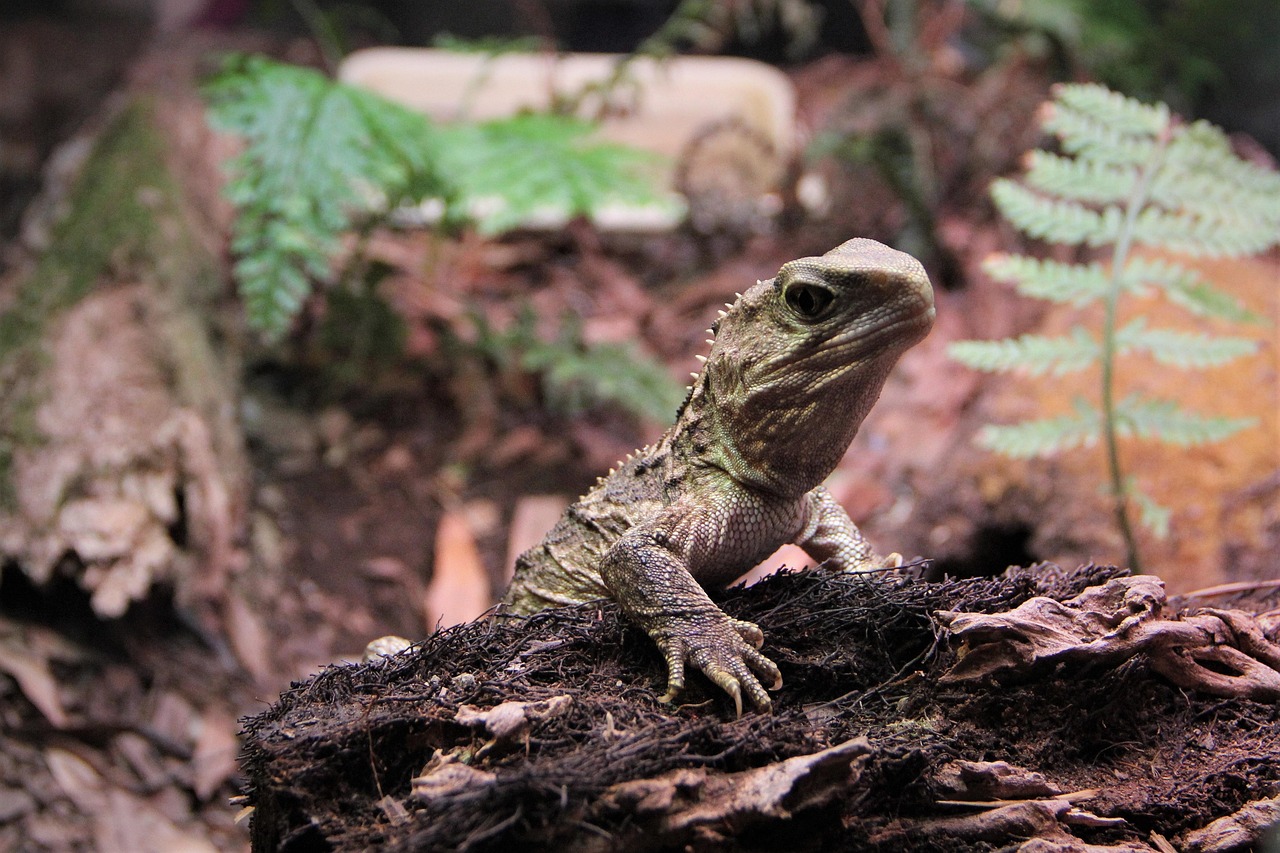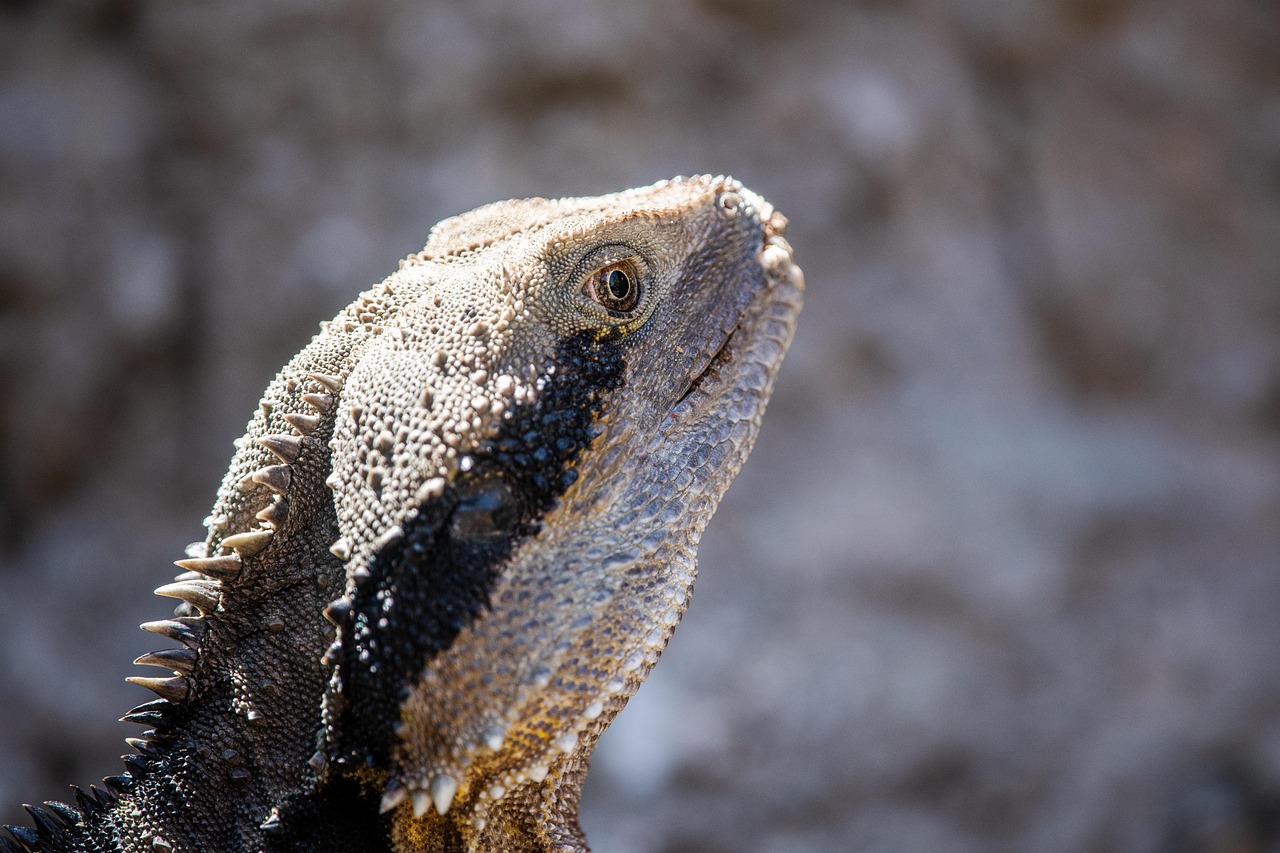Tuatara, a unique reptile from New Zealand, faces significant endangerment threats due to habitat loss, invasive species, and climate change. Conservation efforts are underway, focusing on habitat restoration, predator control, and breeding programs to ensure the survival of this ancient species.
The tuatara (Sphenodon punctatus) is often referred to as a “living fossil.” This distinction highlights its evolutionary significance, as it has existed for more than 200 million years. Tuataras are not lizards, despite their resemblance to them. Instead, they belong to a separate order called Rhynchocephalia. This makes them a unique and vital part of New Zealand’s biodiversity.
While tuataras once thrived across New Zealand, they now inhabit only a few offshore islands. The primary reasons for their decline include the introduction of invasive species such as rats and cats, which prey on tuatara eggs and young. Additionally, habitat loss due to human activities poses a significant threat to their survival.
Understanding the specific threats faced by tuataras can help in developing effective conservation strategies. The following table illustrates key factors contributing to their endangerment:
| Threat | Description |
|---|---|
| Habitat Loss | Destruction of natural habitats due to urban development and agriculture. |
| Invasive Species | Introduced predators like rats and cats that threaten eggs and juvenile tuataras. |
| Climate Change | Rising temperatures affecting breeding success and habitat suitability. |
In response to these challenges, various conservation efforts have been implemented. Organizations dedicated to preserving tuatara populations are focusing on several key strategies.
Conservation Strategies for Tuatara

The primary goal of conservationists is to increase the population of tuataras and secure their habitats. Some of the main strategies include:
- Habitat Restoration: Efforts are made to restore natural habitats by removing invasive plants and providing suitable nesting areas for tuataras.
- Predator Control: Programs aim to reduce the numbers of invasive species on islands where tuataras live. This includes trapping and monitoring predators to protect vulnerable populations.
- Captive Breeding: Captive breeding programs have been established to help boost population numbers. These initiatives also educate the public about the importance of tuataras.
- Research and Monitoring: Ongoing research helps scientists understand the biology and ecology of tuataras better. Monitoring their populations is crucial for assessing the effectiveness of conservation efforts.
The importance of these conservation efforts cannot be overstated. Tuataras play a crucial role in their ecosystems, and their decline could have cascading effects on other species and the overall health of New Zealand’s environment.
Understanding the Tuatara’s Ecology
To effectively conserve tuataras, it is essential to understand their ecology and natural behaviors. Tuataras are unique reptiles with specific requirements that influence their survival. They are primarily nocturnal and prefer cooler temperatures compared to other reptiles. This section explores their habitat preferences, diet, and reproductive behavior.
Habitat Preferences
Tuatara inhabit a variety of environments, although they are most commonly found in coastal regions. The following factors contribute to their ideal habitat:
- Temperature: Tuataras thrive in temperate conditions, with optimal temperatures ranging from 16°C to 22°C. They are less active at higher temperatures.
- Shelter: They require areas with plenty of cover such as rocks, logs, and dense vegetation. These shelters provide protection from predators and extreme weather conditions.
- Nesting Sites: Suitable nesting areas are crucial for breeding success. Tuataras often dig burrows in sandy soils or use existing cavities.
Diet and Feeding Habits
The diet of tuataras consists mainly of insects and small invertebrates. However, they are opportunistic feeders and may consume a variety of prey. Key components of their diet include:
- Insects: Beetles, crickets, and caterpillars are common food sources.
- Worms: Earthworms and other soil-dwelling organisms provide essential nutrients.
- Small Vertebrates: Occasionally, tuataras may prey on small birds or other reptiles when available.
Tuatara have a slow metabolism, which helps them survive in cooler temperatures and allows them to go extended periods without food. Their feeding habits also play a role in maintaining the ecological balance by controlling insect populations.
Reproductive Behavior
Tuatara exhibit unique reproductive behaviors that are vital for species survival. Their breeding season typically occurs between late spring and early summer. Key aspects include:
- Mating: Males attract females by displaying and vocalizing. They may engage in physical displays of dominance.
- Egg Laying: Females can lay up to 15 eggs per clutch. The eggs are buried in sandy soil, where they remain until hatching.
- Incubation Period: The incubation lasts about 11 to 16 weeks, depending on environmental conditions. Temperature significantly influences the sex of the hatchlings; warmer conditions often produce more males.
The long incubation period reflects the tuatara’s adaptation to its environment. It ensures that hatchlings emerge during favorable conditions for survival.
Challenges in Conservation Efforts
Despite ongoing conservation initiatives, several challenges complicate the protection of tuatara populations. Understanding these obstacles is crucial for developing effective strategies. Some of the primary challenges include:
- Climate Change: Changing weather patterns can alter habitats and food availability, making it difficult for tuataras to thrive.
- Limited Distribution: The restricted range of tuatara populations makes them vulnerable to localized threats such as habitat destruction or disease outbreaks.
- Lack of Genetic Diversity: Small isolated populations can lead to inbreeding, reducing genetic diversity and resilience against diseases.
Conservationists continue to work on addressing these challenges through adaptive management strategies and community engagement efforts. Involving local communities in conservation activities is essential for ensuring the long-term survival of tuataras.
Community Involvement in Tuatara Conservation
Community involvement plays a vital role in the conservation of tuataras. Local communities, particularly those living near tuatara habitats, can significantly impact conservation efforts. Engaging these communities fosters a sense of ownership and responsibility towards protecting this unique species.

Educational Programs
Education is a powerful tool for promoting awareness about tuataras and their ecological importance. Various educational initiatives aim to inform the public and local communities about conservation efforts. These programs often include:
- School Programs: Schools in areas near tuatara habitats may implement educational programs that teach students about local wildlife and conservation practices.
- Workshops and Seminars: Workshops for community members can provide information on sustainable practices and the importance of biodiversity.
- Public Awareness Campaigns: Campaigns using social media, posters, and community events can help raise awareness about the threats facing tuataras and how individuals can contribute to their protection.
Through these educational initiatives, communities can better understand the challenges tuataras face and how their actions can make a difference.
Volunteer Opportunities
Volunteer programs offer community members direct involvement in conservation activities. By participating in hands-on efforts, individuals can contribute significantly to the protection of tuatara populations. Common volunteer opportunities include:
- Habitat Restoration Projects: Volunteers can help with planting native vegetation, removing invasive species, and restoring natural habitats.
- Monitoring and Research: Assisting scientists in tracking tuatara populations and behavior can provide valuable data for conservation strategies.
- Predator Control Efforts: Volunteers can engage in humane trapping of invasive species that threaten tuataras.
These activities not only benefit the tuatara population but also foster community spirit and collaboration.
Conservation Success Stories

Despite the challenges, there have been notable success stories in tuatara conservation. These successes demonstrate the effectiveness of dedicated efforts and collaboration among various stakeholders.
The Role of Off-Shore Islands
Several offshore islands have been successfully restored as tuatara habitats. By eradicating invasive species and creating protected environments, conservationists have facilitated the resurgence of tuatara populations. Notable examples include:
- Burgess Island: Once home to a declining tuatara population, extensive predator control measures have allowed their numbers to rebound significantly.
- Stephens Island: The successful eradication of rats has led to a thriving tuatara population that has been carefully monitored and studied.
These island restoration projects highlight the importance of targeted interventions in ensuring the survival of tuataras.
Captive Breeding Programs
Captive breeding programs have also contributed positively to the conservation of tuataras. These programs aim to produce healthy individuals that can be reintroduced into their natural habitats. Key aspects include:
- Genetic Management: Breeding programs carefully select individuals to maintain genetic diversity, which is crucial for a healthy population.
- Hatchery Facilities: Specialized facilities provide controlled environments for egg incubation, increasing hatching success rates.
- Reintroduction Initiatives: Once bred, young tuataras are reintroduced into carefully selected habitats where they can thrive in the absence of predators.
The success of these captive breeding programs has increased awareness about the plight of tuataras and inspired further conservation efforts.
Research Initiatives
Continuous research is essential for understanding tuatara biology and ecology, which informs effective conservation strategies. Ongoing research initiatives focus on various aspects of tuatara life, including:
- Behavioral Studies: Understanding mating behavior, feeding habits, and territoriality helps create better management plans.
- Nutritional Needs: Research into their dietary requirements aids in habitat restoration efforts by ensuring the availability of essential prey.
- Disease Monitoring: Identifying potential diseases that could impact tuatara populations allows for early intervention and management strategies.
This research is vital for adapting conservation tactics to ensure the ongoing survival of tuataras in an ever-changing environment.
Future Directions in Tuatara Conservation

As conservation efforts for tuataras continue to evolve, several future directions hold promise for enhancing their survival. These strategies aim to address existing challenges while leveraging new technologies and community engagement.
Utilizing Technology in Conservation
Advancements in technology offer innovative solutions for monitoring and protecting tuatara populations. Key technological applications include:
- Remote Sensing: Drones and satellite imagery can be used to assess habitat conditions and track changes over time, facilitating timely conservation interventions.
- GPS Tracking: Attaching GPS devices to tuataras allows researchers to monitor their movements and behaviors, providing valuable data on habitat use and interactions with predators.
- Environmental DNA (eDNA): This technique can detect the presence of tuataras in a specific area by analyzing soil or water samples, helping to assess population distribution without extensive field surveys.
By incorporating these technologies, conservationists can enhance their understanding of tuatara ecology and improve management strategies.
Strengthening Policy and Legislation
Effective conservation also requires robust policies that protect tuataras and their habitats. Future efforts should focus on:
- Legal Protections: Strengthening legal frameworks to protect tuatara habitats from development and invasive species is critical for their survival.
- Collaboration with Indigenous Communities: Collaborating with Māori communities can lead to culturally appropriate conservation practices that respect traditional knowledge and land management techniques.
- Funding for Conservation Initiatives: Securing sustainable funding sources for ongoing conservation projects will ensure that efforts are adequately supported over the long term.
These policies can create a supportive environment for conservation activities and enhance the resilience of tuatara populations.
Final Thoughts
The tuatara is not just a remarkable species but also a symbol of New Zealand’s unique biodiversity. Their survival hinges on understanding the intricate balance between ecological needs and human impacts. Conservation efforts must remain dynamic, adapting to new challenges such as climate change and habitat loss.
Community involvement is paramount. Educating local populations about the significance of tuataras fosters a shared sense of responsibility. As communities engage in conservation activities, they not only contribute to the survival of this ancient reptile but also enrich their connection to the natural world.
Moreover, embracing technological advancements and strengthening policy frameworks will provide essential tools for effective conservation. By prioritizing research and monitoring, we can develop informed strategies that ensure tuataras continue to thrive in their natural habitats.
Ultimately, the fate of the tuatara serves as a reminder of the delicate interplay between species and their environments. Protecting this unique reptile is crucial not only for its survival but also for maintaining the ecological health of New Zealand’s diverse ecosystems. The ongoing commitment of conservationists, researchers, and communities alike will be vital in safeguarding the future of tuataras for generations to come.
